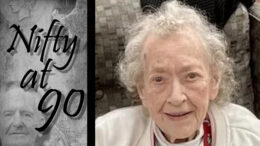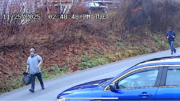The most serious whitetail hunters spend a lot of time in the woods each autumn, looking for deer.
Andy Bensing does the same.
In his case, though, there’s a difference. Most of the deer he seeks are already dead.
And he figures to be busy soon.
This spring, after more than a decade of debate, Pennsylvania lawmakers legalized the use of leashed tracking dogs for finding big game, namely white-tailed deer, black bears and elk.
The dogs aren’t used to hunt those species, as in some parts of the South. Instead – on a leash and under control at all times – they operate more like retrievers.
“Leashed tracking dog handlers use their dogs to track and recover dead, wounded or injured big game. Leashed tracking dog handlers provide a valuable service in aiding hunters in locating wounded big game that otherwise may go unrecovered,” says the New York Department of Environmental Conservation, where blood tracking has been legal for years.
Bensing has been at it for years. A resident of Reading, Pa., in Berks County, he operates in neighboring state like Maryland and New Jersey. He follows as many as 80 tracks a season, mostly for deer, some as far as five hours from home.
To say he’s passionate would be an understatement.
“It’s no different than a guy who goes archery hunting every morning and every afternoon,” Bensing said. “It’s a form of hunting.
“When I find a deer for somebody, I’m pretty much as excited as they are. There’s a year’s worth of training and work in that dog, so it’s a big deal for me.”
This fall, he’ll work largely in Pennsylvania. And he’ll recover game.
Not every trail leads to a dead animal, though.
On average, Bensing said, his Labrador retriever, Jack, finds about 35 percent of the animals he pursues. Fifty percent of the time, the quarry escapes, not mortally wounded after all.
In the remaining cases, the dog just loses the trail.
Which of those percentages a wounded deer or other animal falls into depends a lot on the hunter behind the bow string or trigger, said Susan Edwards. Operator of Blood Tracking Beagles Game Recovery of Kittanning, in Armstrong County, she’s tracked for a decade, mostly in Ohio.
“The dog’s not going to save your butt because you took a bad shot,” she said. “It’s just not going to happen.”
That’s why most calls taken by a blood tracker begin with a thorough interview, she said. When she hears from an archer that’s lost an animal, for example, she quizzes him on things like whether he recovered his arrow, what kind of blood, hair, fat or other material is on it, and whether it passed through the animal.
“It’s kind of like being a detective,” Bensing agreed.
Edwards also asks hunters whether they have permission to be on the property where the wounded animal might have gone. Trackers have no more right to trespass than anyone else, and the inability to follow a deer is “one of the main reasons we have non-recoveries.”
A hunter’s answers to all those questions usually decide whether it’s even worth taking the dog out.
“Because not every deer is recoverable,” Edwards said.
Hunters can up the odds by being careful and attentive in the woods.
They should identify, as closely as possible, the spot where the animal was standing when they shot, Edwards said. They should also mark the blood trail as they follow it, with bits of toilet paper or whatever, hung at eye level.
What they shouldn’t do is step in any blood along the way.
And then, if they lose the trail or the animal jumps up and runs off, they should leave the area. Right away.
“When in doubt, back out and call the dog,” Bensing said.
That serves two purposes, Edwards said.
First, if the deer or other big game is still alive, backing off until the dog arrives often lessens how far it travels before perishing.
“If you push that deer, you better be ready to track a mile or more to find it. Whereas if you don’t push it, you may find it in 400 or 500 yards,” she said.
Second, leaving the last scene of evidence quickly – rather than doing a grid or body search that likely involves stepping in unseen blood or transferring scent – makes it easier for the dog to get on the trail.
And a well-trained dog can do the job, she said.
“It’s a very efficient thing. They just take the trail like a machine,” Edwards said.
Sometimes dogs find dead deer or other big game within 75 yards of where the hunter lost the blood trail, Bensing said. Other times, a deer may go a mile or more before expiring.
“Especially in the rut,” Bensing said. “Some bucks that are hit pretty hard, mortally wounded, they know it and they’re heading back to their home territory and it could be pretty far away.”
Most often, though, dogs find game within 300 to 400 yards of where the hunter lost track of it, he added.
It pays to call a tracker quickly after losing an animal, though, for several reasons.
Any trained dog should be able to pick up a track within 24 hours, Bensing said. He’s had them do so after as many as four days, though, when conditions were right.
But the older the track is, the tougher it is to find, Bensing said.
And the longer a deer or other animal is out there, the more likely it is a predator might get to it first, he added.
Then there’s the issue of demand.
It’s not uncommon for blood trackers to take multiple calls, and follow multiple trails, in a single day, Edwards said. And it’s usually first come, first served.
“Basically you should call the tracker as soon as you need help,” she said.
Bensing agreed, especially in regards to Pennsylvania. He expects demand for tracking dogs to climb quickly given how many deer hunters – and especially archery deer hunters – the state has.
And trackers are relatively few.
Right now, Bensing – founding president of UnitedBloodTrackers.org and still its director of testing – knows of less than two dozen in the state.
“There is immediately going to be more demand than there are trackers. I’m sure of it,” he said. “So the sooner you call the better.”
There will surely be more dog handlers in the future, Edwards said. She’s aware of several new people getting into tracking now.
That’s good, she said. Hunters will benefit, as tracking dogs like her beagle Roczie show their worth.
“It’s all about the dog as far as I’m concerned. I’m just the person who gets to be on the other end of the leash,” she said.
“I get to go on all these adventures with them. And they wow me every time.”
Bob Frye is the Everybody Adventures editor. Reach him at (412) 216-0193 or bfrye@535mediallc.com. See other stories, blogs, videos and more at EverybodyAdventures.com.






























